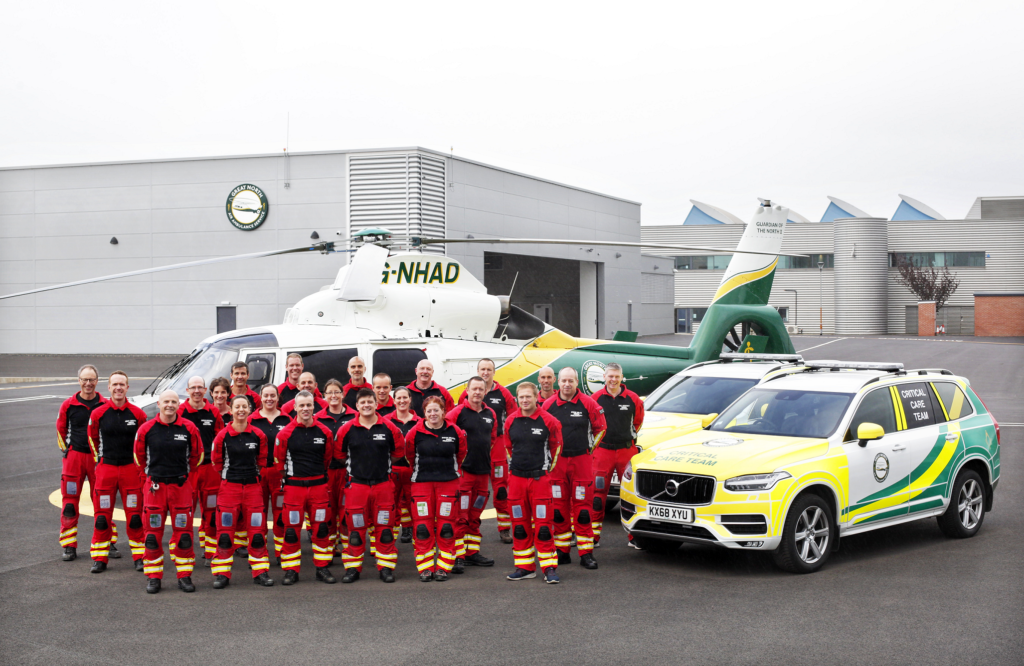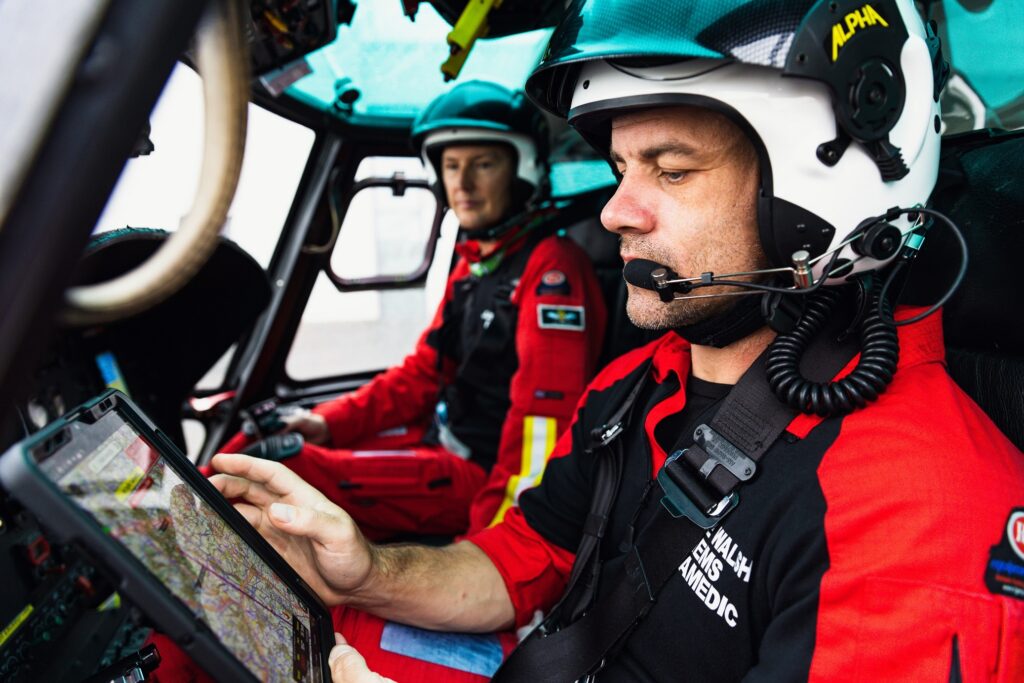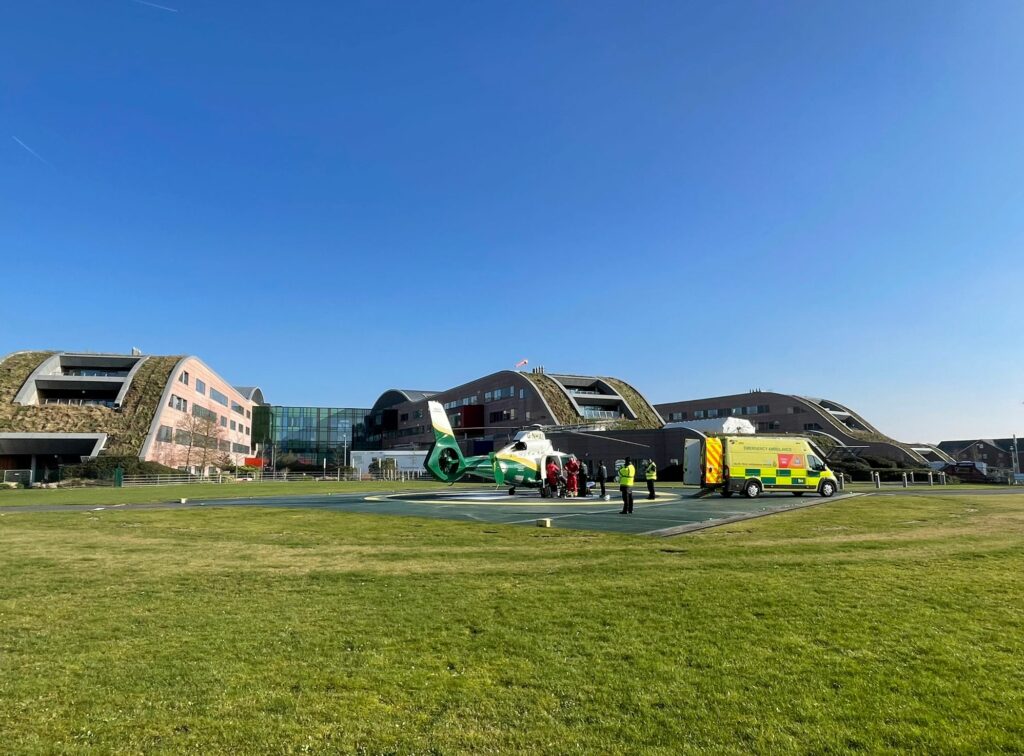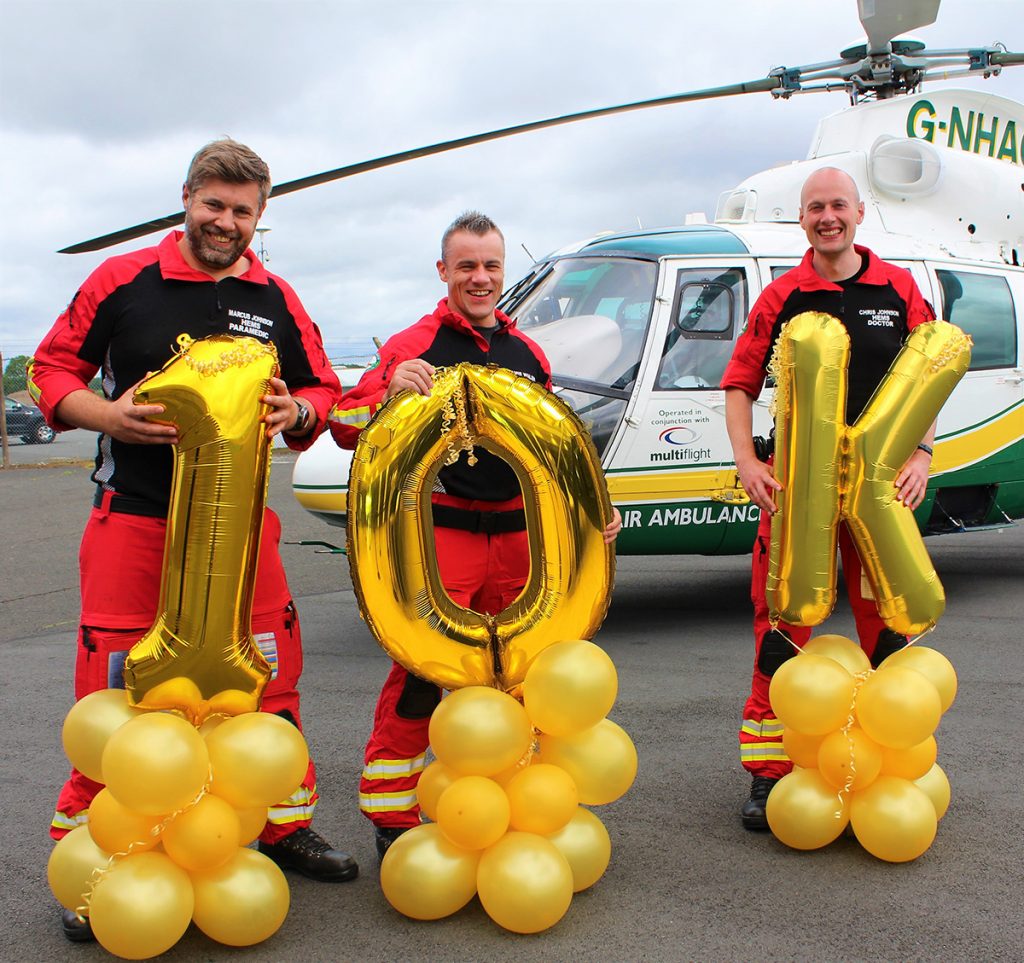Our critical care team cover an area of more than 8,000 square miles and deliver life-saving care in a wide range of landscapes, including on a fell top, a roadside or in a city centre.
Due to the varied incidents that our team respond to, they need an aircraft which can handle the demands of flying in challenging environments and safely and efficiently land on scene.
A few years ago, we upgraded our fleet of helicopters from AS365 Dauphin N2s to the newest variants in the Dauphin family, which are Dauphin N3 and N3+.
At the time of purchasing the new aircraft, our previous fleet were nearly 30 years old, and while they had served our team well, there had been changes in regulations which limit how the older models can be used.
We decided it was best to replace them with two newer, more powerful helicopters, that would allow our team to reach even more patients across the region.
A review was launched in 2017 and found that the next generation of Dauphin aircraft would best suit the demands of the 8,000sq mile area that our team cover, as we need an aircraft that can handle the demands of flying from coast to coast, to the tops of fells and to city centres.
At the time of purchasing, the newer models would have cost upwards of £9m new, so that’s why we bought two second hand helicopters with plenty of life left in them, at a much lower price.
We welcomed the Guardian of the North II, a Dauphin N3+, to our base near Eaglescliffe in August 2020, which coincided with our critical care team moving in after previously being based at Teesside International Airport for several years.


The Pride of Cumbria II, a Dauphin N3, began work at our base in Langwathby, Penrith, the following year, and it is expected that both aircraft will serve the region for approximately 15 years.
For those who may have seen our helicopters out and about, you will have noticed that from the outside they look very similar to the old aircraft but just have a slightly longer nose, which accommodates a bigger weather radar.
The main differences are actually inside the helicopters, so we’ve highlighted some of the key features, which have helped our team provide an even better service for our patients.
Space
The rear cabin of our N3 and N3+ aircraft have been reconfigured to give our doctors and paramedics more space in the back of the helicopter. This allows our team to have 360-degree access to their patients.
Power and fuel
Our helicopters all have twin engines, but the ones on the Dauphin N3 and N3+ have about 15% more power compared to the Dauphin N2. This means they can carry more fuel, which in turn gives them more endurance that allows them to attend several incidents in a row without having to refuel, saving vital minutes in the event of an emergency.
The helicopters carry approximately two hours of fuel, and usually cruise at around 170mph.
In her first weekend of service, the Pride of Cumbria II, was able to travel to three consecutive incidents in Cumbria, Scotland and Northumberland before needing to refuel – something that would never have been possible in the previous aircraft.


Flight instruments
All the flight instruments are the same in the N2 and N3, except in digital screen format rather than analogue.
There are identical screens on both sides of the cockpit each with a pilot flying display and a navigation display. There is a large digital screen in the centre which incorporates a moving map and a Traffic Collision Avoidance System.
The N3+ also has a digital four-axis autopilot which provides improved flight control, while reducing the pilot’s workload
Adaptations for the Isle of Man
Since March 2022, GNAAS and Manx Care have been working together to develop a Helicopter Emergency Medical Service (HEMS) for the Isle of Man.
The introduction of a HEMS service and an enhanced emergency air bridge allows patients who are seriously ill or who have suffered a major trauma to be taken directly from their community on the Isle of Man to a centre of excellence in the UK for emergency medical treatment.
Since launching the new service, our critical care teams at GNAAS, based at Langwathby, Cumbria, and Teesside in the North East, have responded several times to a variety of incidents.


To allow for the extended flight over water to the Isle of Man, which is 35 minutes, we had to make several adaptations, both to our aircraft and staff training.
Our helicopters have had flotation devices fitted to them in case of needing to ditch in open water to help remain afloat. These help to keep the aircraft buoyant and allow time for the team to escape, and there are also rescue rafts fitted to the aircraft.
In addition to a survival brief every day and needing to review wave height over the Irish Sea as part of the aviation brief, the team are required to wear a personal flotation device when flying to the island.




